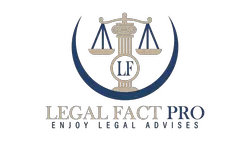
How to Create a Land Trust | A Step By Step Guide By Expert
The contents of this web page are for informational and educational purposes only, and nothing you read is intended to be legal advice. Please review our disclaimer before taking action based upon anything you read or see.
A land trust is the best way to ensure your property’s safety. It binds someone in charge of it, with or without possessing the said title—also, all control over what happens next. You can’t recover if something goes wrong. So, this gives peace of mind knowing there will always be an overseeing party monitoring things closely before concerns arise.
The ((land trust)) objective is based on the type of land trust, as real estate trusts. This is also called Illinois land trust for how they reproduced works to protect the owner’s privacy and protection and ignore probate. This guide will teach you how to create a land trust.
The important aspect of creating a legitimate land trust can be possible by hiring a professional and expert lawyer. Land trust formation for most people is a complicated process without hiring a lawyer. So if you want to know the process of creating the land trust, keep reading this informative article.
How to Create a Land Trust

Creating a land trust is not an easy task. It starts with choosing a trustee for a property with the consideration in mind to make a relationship of a land trust and the legal and financial ramifications of a land trust. This aspect does not adhere to landowners, and the state states must be hard-working about selecting credible and competent ((trustees)).
Creating a land trust can involve multiple beneficiaries and owners. When the land trust has the involvement of multiple owners, there are extra advantages for granted. One of them is the trust that can protect the other owners if someone becomes the target of the lawsuit.
Decide the type of the land trust
You have to decide what kind of land trust you want to create as a first step: the mission and the statement of purpose with clear aims and objectives. Keep track of the land trust activities you wish to undertake with your land trust.
The types of land trust include Illinois land trusts, community land trusts, and conservation land trusts. The ((Illinois land trusts)) were first introduced in Chicago in the 1800s. This land trust is generally used for privacy, estate planning, and to borrow the facilitate arrangements.
The beneficiary or the granter of this land trust has full control of the property. Moreover, the trustee holds the property title and cannot use the property. The document for this land trust is known as a deed of trust and depends on states law. The trustee can file the notice concerning the fiduciary relationship form. In addition to the IRS and transfer out of the trust.
The non-profit organizations start the community land trusts at the grassroots levels. In addition, the local governments usually support these land trusts that offer organizations to operate the activities.
The conservation land trusts offer land security for health—also, the safety of all American presidents and the generations for the country’s future. In addition to conserving that land’s natural resources, there is a relaxation for the tax incentive in the conservation land trust.
Get Resources
To fulfill and complete these activities, you should have enough resources. The resources include a granter trustee and a beneficiary to create a land trust. So, the granters generate the trust and transfer the property into it. Next, trustees control the management aspects of the faith. Finally, the beneficiary benefits from the trust.
The material resources are important to create trust. This, primarily if charitable donations fund these land trusts, public organizations, and private and government grants. Most land trusts work locally, offering crucial land-use tools for property owners. So, the residents and citizens are concerned with the personal and conservation of private lands.
Create a Statement of purpose
For charitable organizations and institutions, you should consider the statement of purpose ((CCRA regulations)). This is essential before creating and drafting your goals with the incorporation documents, as some goals are not comparable to CCRA. The statement of purpose allows you to transfer specific assets to another person, trustee to be held for the trustor’s beneficiaries.
Build Management options
While creating a land trust, you have to consider the membership and management options, including a membership organization that elects the board, a society with directors nominated by another organization or institution, and a small society where all members also act as directors.
The trustees manage the trust activities and handle the intimate details of the property, and the beneficiary is the person who benefits from the trust.
You can create the land trust by developing the communities without the displacement of people and perpetuating the affordability of the housing societies that are privately owned organizations by ignoring the market rates developed intentionally by the private and public sectors. Determine the sponsorships, identify beneficiaries, delineate service areas, improve or develop the land trust, and secure funding.
Recruit people
To create the land trust, recruit people with the skills and goals you require for the future volunteers of staff and the founding board.
Create Strategic planning
It will help if you keep in mind that there can be consensus about the big questions, like the workshops’ vision, board development, and strategic planning. In creating land trust, strategic planning has a key role to play. You are working backward from the vision to translate it into the goals and objectives and steps you should take to get them because the strategic planning explains your plan to proceed.
Read More: How To Ask A Lawyer For Help
Strategic planning consists of five steps include. Determine the position of strategy, prioritize your goals, create the plan, manage and execute your plan, and review and revise the plan of creating land trust.
Draft a constitution
According to the law of ((societies act)), form the constitution and by-laws then apply for incorporation. This process is tricky, so you should be careful and attentive, as the by-laws and constitution and the weaknesses may harm you later.
You can draft a constitution by preparing a trust deed on the stamp paper of the requisite value, by fulfilling the registration requirements of the deed of the trust with the local registrar and then submitting the deed of trust along with the photocopy for registration.
The settler organizes the trust deed. As in the declaration of the trust, the settlor is needed to execute the deed of trust. So he is liable to write the terms and conditions of trust, and anyone can act on the trust deed executed by the settler.
Make charitable status
Write an application for the charitable status to CCRA. Join the professionals and other compatible institutions like ((LTABC)), who can assist you in achieving your goals and objectives.
Have General designation
Apply for the general designation to uphold the conservation after holding another land trust.
Frequently asked questions
How much does it cost to set up a land trust?
The standard fee for ((full service is $500)). This includes the time of one hour with the phone or on the official site. You can also call title companies or lenders to smooth out the transaction when necessary.
What states allow land trust?
There are currently six states with restricted land trust laws. Florida, Illinois, Indiana, Virginia, North Dakota, and Hawaii. It means that those states have specific rules and regulations that need to be followed for a trust to own land. You can create a land trust in any state.
What is the benefit of the land trust?
A land trust offers many benefits, as its two main advantages are the privacy of ownership and the possible avoidance of probate. In addition, a land trust can help to save against the judgment and likens, prevent land partition, ease estate planning, and facilitate real estate title transfer.
How do land trusts make money?
The land trust can make money so that rather than an LLC paying tax. The owners get the profits, whether for the individuals and the partnerships, corporation or an S corporation. Other benefits of forming the land trust are the LLC, including the owners’ protection, isolation of the owners, and the level of privacy offered.
Learn More: What Happens If I Don’t Pay My Lawyer
How does a land trust protect you?
A land trust can offer you asset protection benefits by placing you into a separate land trust deed. If a lawsuit corresponds with one head of real estate, other properties named to several trusts are not automatically burdened. Suppose the property titles and trusts related to those properties are sued. So, all of the assets and liabilities connected with them would be at risk.
Conclusion
To conclude, I will say that you can create and form a land trust for several properties by organizing the two legal documents. Before starting the procedure for arranging the documents, you have to decide the specific name of your properties. When you find the family member or the trusted friend, you have to search for the land trust attorney, who will draft the contract that includes the rights and happenings of both the parties, you and your land trust.
When you both sign the document, there is a need to record the deed for trusty. After this step, you can invest in your properties. Therefore, you can enjoy the advantages of forming a land trust and investing in the property you own.

I’m a driven and accomplished law graduate and post-graduate, passionate about sharing my legal expertise via my blog. I hold a Bachelor’s degree in Law from the University of London (UK) and a Master’s in Law from the University of Derby (UK). Both gave me the foundational knowledge and skills to excel in my chosen career path.
Throughout my academic journey, I have gained extensive knowledge in various fields of Law, including Corporate and Business Law in the USA, Criminal Law, International Law, US Copyright law, and most importantly, American Constitutional law.


Comments are closed.